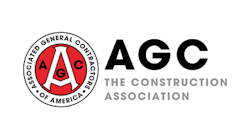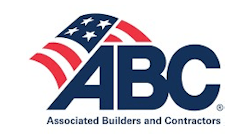What is the most important best management practice (BMP) needed on a construction site to ensure minimal discharge of sediment during runoff events? Is it strategically placing barriers to block the path of runoff? Or should sediment containment systems be placed to intercept runoff? How about implementing erosion control practices?
Actually, it is none of the above. It’s communication!
Communication is such a simple and inexpensive BMP. But with whom should communication be implemented? Should it be with the project manager, who is simply following a set of plans? Maybe better communication with the designer is needed? But isn’t the designer simply following rules and regulations set forth by a regulatory agency? If those rules and regulations are flawed, shouldn’t this problem be communicated to the regulators? Finally, don’t forget about the inspector, who is supposed to be well informed about erosion and sediment control (ESC) plans and knowledgeable about BMPs. What happens when inspectors don’t know everything about the plans and have limited knowledge about ESC?
The above discussion suggests that a hierarchy of communication to ensure effective ESC on a construction site is not a one-way street. Figure 1 illustrates the interdependency of individuals and/or agencies if the goals set forth in the Clear Water Act (CWA) and EPA requirements are to be met. Notice there is no one group of individuals or agencies accountable for effective ESC. Instead, everybody must be responsible and be able to communicate with each other. Essentially, interaction among all of those working on a construction project must occur.
Regulatory Agencies
What is the role of regulatory agencies? Few would argue that they must enforce the environmental laws of the United States. However, enforcement must be done in a manner that is realistic, achievable, and consistent. This can only be accomplished by regulatory agencies continually communicating with all impacted parties. At the same time, it is equally important that designers and inspectors provide feedback to regulatory agencies so that their policies remain effective and realistic.
Political Backing. Regulatory agencies must have the political resolve to enforce the law of the land. This is the role of the Environmental Protection Agency (EPA), and it has the backing of the US government. Unfortunately, local regulatory agencies do not have the luxury of such support. Instead they must obtain local political support–a task that is not always easy to achieve. Thus, effective communication (sometimes known as marketing) is needed to ensure political support if reduction in runoff-water sediment from construction sites is to become a reality.
Requirements. Once political backing is ensured, regulatory agencies must clearly communicate their requirements to designers, contractors, and inspectors. Clearly defining requirements for drawings, identifying acceptable BMPs and recognizing their limitations, discussing timing issues for installing BMPs, and allowing for innovation must be the norm. “Cookbook” submittals should be avoided since they stifle innovative methods and can cause ESC to be a sham.
Review Process. Regulatory agencies must clearly communicate submittal requirements and let the applicant know how and when plans will be reviewed and processed. Review processes that exceed 30 days should not be tolerated. Also, if a regulatory agency requires professionals to develop ESC plans, then similarly qualified people must review the plans. Any other action communicates the impression that qualified people are not necessary to oversee National Pollutant Discharge Elimination System permit requirements.
Identify Penalties. In an ideal world, everybody would try to protect the environment. Reality dictates that the possibility of penalties is required if compliance is to be achieved. Doing nothing gives the impression that regulatory agencies are not serious about protecting the environment. A lack of action is construed as doing business as usual and does little to protect the environment while construction activities occur. Small hand-slapping fines will be ignored! Work stoppages, however, catch everybody’s attention.
Designers
Often, regulatory requirements mandate that designers of ESC be professional engineers. This requirement puts engineers having minimal ESC skills in a compromising position since professional ethics might prevent them from attesting that they have designed a plan. Fortunately, regulatory agencies (e.g., EPA), states, counties, and cities are overcoming this problem by recognizing that a Certified Professional in Erosion and Sediment Control has the expertise and skills to ensure development of effective plans (see www.cpesc.org for more information).
Designers have the difficult task of interpreting regulatory requirements, satisfying demands of the client, and developing plans that contractors can implement in a cost-effective manner. Effective ESC on construction sites requires designers to be properly trained and have extensive experience. This means that designers have to be cognizant of hydrology, engineering, drainage issues, ESC BMPs, agronomy, geology, soil science, and politics and (perhaps most important) possess common sense.
Identify the Needs. Designers must understand what is required to reduce sediment from runoff waters and how to minimize erosion while construction activities occur. They need to assess how construction might impact critical areas such as wetlands, streams, and ponds. Also, designers need to maintain communication with regulatory agencies and contractors to ensure their needs and requirements are being met.
Understand What Is Needed. Designers must complete site visits before, during, and after construction activities occur. Preconstruction site visits help designers identify critical habitats, observe existing vegetation, develop a feel for the site, and identify potential problems. By completing site inspections during construction activities, designers can learn about problems that contractors and inspectors experience daily. Also, designers need to complete postconstruction site visits to assess whether erosion control measures are minimizing downstream discharges of sediment. In summary, designers must inspect all aspects of their work if they are to become competent in ESC.
Develop Plans for Contractors. Plans are a “first appraisal” of what needs to be completed on a construction site. As such, they must change if effective protection of the environment is to occur. Thus, ESC plans must be developed for the contractor. This requires designers to communicate what is required for preconstruction, construction, and postconstruction activities. Plans must have numerous notes on each page, adequate contour lines, identification of BMPs, and clear instructions as to when something is to be completed. Designers must avoid “cookbook” solutions that result in exactly the same template for every submittal. Finally, designers should never assume contractors know everything about controlling sediment and erosion while construction activities occur. They don’t!
Get Involved. Designers have to be involved with all aspects of ESC. Communication with the client, contractor, inspectors, regulatory agencies, and (if needed) the general public is a must. As a minimum, biweekly meetings with all parties must occur. During these meetings, frank discussion about the ESC plan has to occur. Are some of the BMPs not practical? Should there be modifications to the plan? Why is noncompliance occurring? What can be done to improve the current situation? Only by asking these, and similar, questions will designers learn what is happening on the construction site.
Contractors
Contractors make or break an ESC plan developed by designers. If the plan is confusing, then only minimal measures will be installed. However, when plans clearly communicate what is needed, what is to be installed, and when installation is to occur, effective ESC on a construction site will become a reality.
Take the Plan Seriously. Protecting the environment is a responsibility everybody must share. Since construction activities can potentially disturb and expose vast amounts of land, every effort must be taken to minimize sediment leaving a site. Thus, contractors have to take ESC plans seriously. The CWA mandates severe fines, and EPA is serious when it identifies the contractor as being responsible for implementing the plan.
Install, Inspect, and Maintain. Contractors can reduce ESC costs initially by always installing BMPs correctly. Once installed, BMPs must be continually inspected and maintained. In addition, noncompliance issues are to be reported to the regulatory agency through an inspector report. Don’t forget: Those reports might have to be available for review up to three years after completion of the project.
Educate. When plans illustrating specific BMPs will not function as designed, contractors must communicate to designers and inspectors. This means contractors might have an obligation to (diplomatically) educate designers and inspectors when changes or modifications are recommended. Likewise, contractors must be ready to learn about new methods from the designers and inspectors.
Inspectors
Pity the poor inspector! In what other profession does one have to be a politician while communicating with contractors, designers, and regulatory agencies and at the same time be knowledgeable about all aspects of ESC? Not an easy task for any one person.
Understand the Plan. If inspectors do not understand construction plans, then more than likely they will not know how to read ESC plans. Plans are more than just symbols on a piece of paper. They are a blueprint for contractors to follow. Thus, inspectors have to know the implementation schedules, where and when BMPs are to be installed, and what BMPs are to be maintained or eliminated, as well as fully understand the limitations of BMPs.
Be Certified. An inspector has to maintain communication with regulatory agencies, designers, and contractors. As such, certification is needed to demonstrate competency with issues related to ESC. Certification also requires an individual to keep current on the many BMPs that can be used on construction sites. Thus, continued education is a must.
Know the Limitations. An inspector might or might not be qualified to be a designer. However, inspectors must know their limitations when modifications and updates of an ESC plan are required. Thus, inspectors must maintain communications with designers when major modifications are required. Keep in mind that if an inspector completes major modifications to a plan and designer approval is not obtained, then the municipality might be liable for damage caused by the changes.
Communicate Concerns. The contractor needs to be informed by the inspector of noncompliance and violation issues. However, sufficient time must exist to allow for repairs, installation of new BMPs, removal of structures, and so forth. When it appears a plan is not workable or has obvious problems, then the inspector must relay these observations to the designer, contractor, and regulatory agency. Likewise, when regulations prevent or hamper the implementation of effective ESC techniques, inspectors must inform regulatory agencies of these problems. Lastly, the inspector must insist on meeting weekly with the contractor so that updates about construction activities are communicated.
Summary
Effective ESC on construction sites requires continual communication among all parties associated with the project. Whenever this simple and cost-effective BMP is continually implemented, problems associated with ESC will be minimal. However, ignoring the use of this straightforward BMP can lead to excessive costs.










